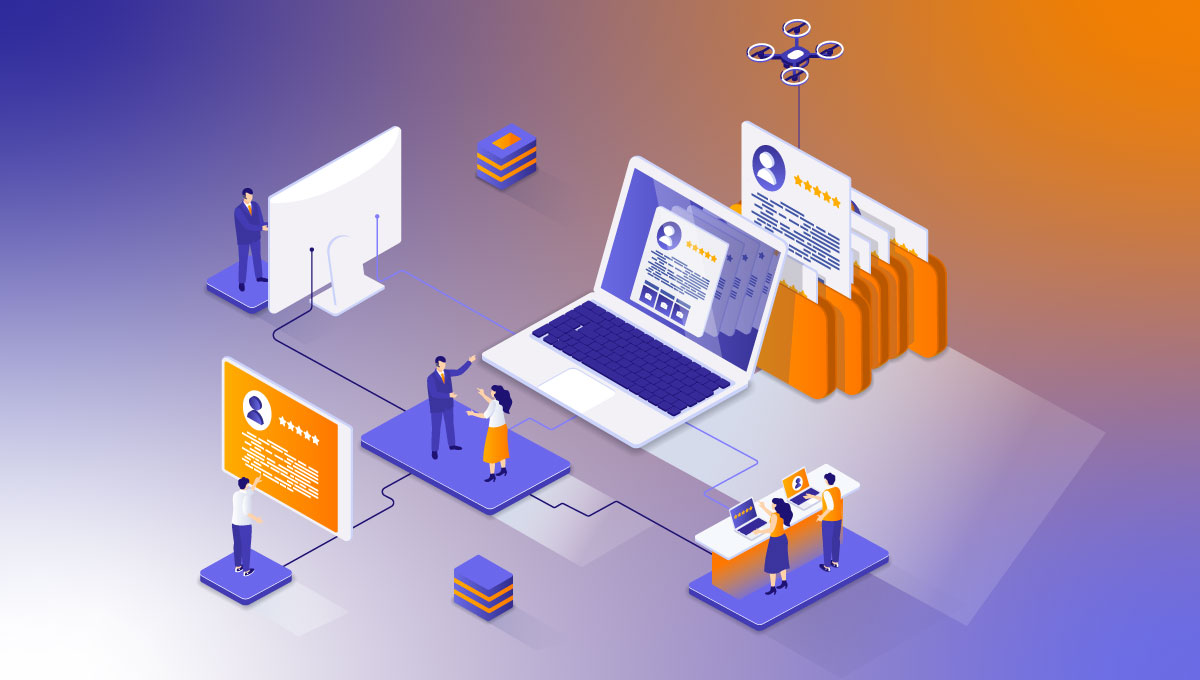
Fifteen to twenty years ago, when I was working in HR software implementations, change was something organizations did to their workforce. The change management profession had developed to persuade people to comply with the organizations' needs. Organizational changes used to take several years.
Most business leaders agree that organizational agility is crucial for navigating today's unpredictable geopolitical, economic, and social landscapes. We operate in a competitive setting that frequently requires swift change.
Reshape your organization to stay competitive
Today's business faces competitive challenges. Many new firms were born agile; others have already made the transition. McKinsey & Company reports that highly successful agile transitions created:
- 30% efficiency gains while improving customer satisfaction, employee engagement, and operational performance.
- Increased their firms' efficiency by a factor of 5-10.
- Turbocharged innovation.
Their most remarkable achievement is surpassing born-agile companies and adopting more mature operating models.

To compete in the agile arena, McKinsey suggests these four steps, beginning with getting the leadership team ready.
Step 1. Provide training for senior leaders to comprehend agile principles.
- Prepare by training top execs on Agile's history and the Agile Manifesto's origin.
- Visit other companies implementing agile practices and observe how they work. Gain insights into the traits and actions for supporting an agile working method.
Step 2. Embrace an agile mindset.
- Prioritize a customer-centric approach and view people and their leaders as valued customers.
- Promote cross-functional collaboration, breaking down silos to drive innovation and align HR to business goals.
Step 3. Lead with intent and make value your purpose.
- Target a productivity boost driven from the top. In a large, dispersed company, consider doing it in waves.
- Don't dally. Move quickly and iterate. "Highly successful transformations tend to complete the crucial phase in less than 18 months."
- Display behaviors that serve as role models and embody the agile mindset.
- Securing support from the workforce is essential, but evidence suggests that the bottom-up exploration approach isn't effective. Action-oriented leadership and scalable impact will be the most successful.
Step 4. Create connections that extend beyond teams.
- View your operating model as a system and align its parts: strategy, structure, process, people, and technology. Piecemeal changes won't get you to the finish line.
- Encourage teams to schedule discussions with other teams to explore cross-functional dependencies.
- Encourage collaborative projects where skills and interests align. Share talent to learn and work together.

Prepare HR to Support the Transition
Adopting agile practices requires a shift in mindset, preparing the entire company, and aligning strategies throughout the organization. HR can lead the organization by becoming agile itself.
1. Understand Agile
- Prepare HR teams by learning Agile's history and the Agile Manifesto's origin.
- Visit other HR teams and observe how they operate with agile practices. You'll gain valuable insights into the qualities needed for agile working methods and how to apply them in your talent practices.
- Implement a skill-based approach to talent management. Consider dynamic talent allocation and skill pools if you have a project-based workforce.
2. Conduct HR Retrospectives
- Meet with HR teams and internal clients to review how things have worked.
- Conduct sessions with hiring managers after significant HR events (e.g., hiring, firing, performance reviews) so you can learn from them and iterate.
3. Create an Iterative Approach
- You can help create an iterative approach by applying agile in the people-management process. For example, you could take on one of these projects as a starting point:
- Designing career paths for agile teams.
- Modernize performance management practices, .
- Update compensation practices.
- Focus on building capabilities.
4. Lead by Example
- Shift to agile "flow to work" pools in HR, allocating people to tasks according to business needs.
- Demonstrate agility in decision-making and rapid responsiveness, enabling productivity and faster time to market.
5. Make Data-Driven Decisions
- Align HR practices with agile principles and data-driven decision-making.
- Improve processes based on evidence and feedback.
- The success of an agile organization depends on HR's role. Lead by example and contribute to building a responsive, collaborative, and adaptable workforce.
6. Focus on the New Culture
- Empower HR teams to collaborate across the organization.
- Focus on a culture of transparency, adaptability, and continuous learning.
Into the Future
We're in a new era in organizational dynamics. Fifteen years ago, I wouldn't have imagined the HR and talent management shifts ahead. Yet, here we are, navigating change together.
During this writing, I remembered my long-ago training in the Deming principles. In 1983, after a four-day workshop, he warned us about the danger of losing sight of his Fourteen Points and reverting to the Seven Deadly Diseases of Management. That happened in nearly all the organizations I worked in from 1983 to 2004. They powered through their organizations, making quality improvements, and then returned to their old ways of thinking.
We urge you to learn from past mistakes and strive to remain agile. We've seen firsthand how fostering an agile mindset can drive transformation and turn challenges into opportunities for growth.
Let's continue the agile principles that serve us:
- customer-centricity,
- iterative processes, and
- data-driven decision-making.
But let's also maintain our commitment to a culture that values transparency, adaptability, and continuous learning.
Phenom eCloud is a comprehensive technology solutions provider committed to empowering businesses to overcome challenges, enhance their workforce capabilities, and achieve superior outcomes.





Leave a Comment